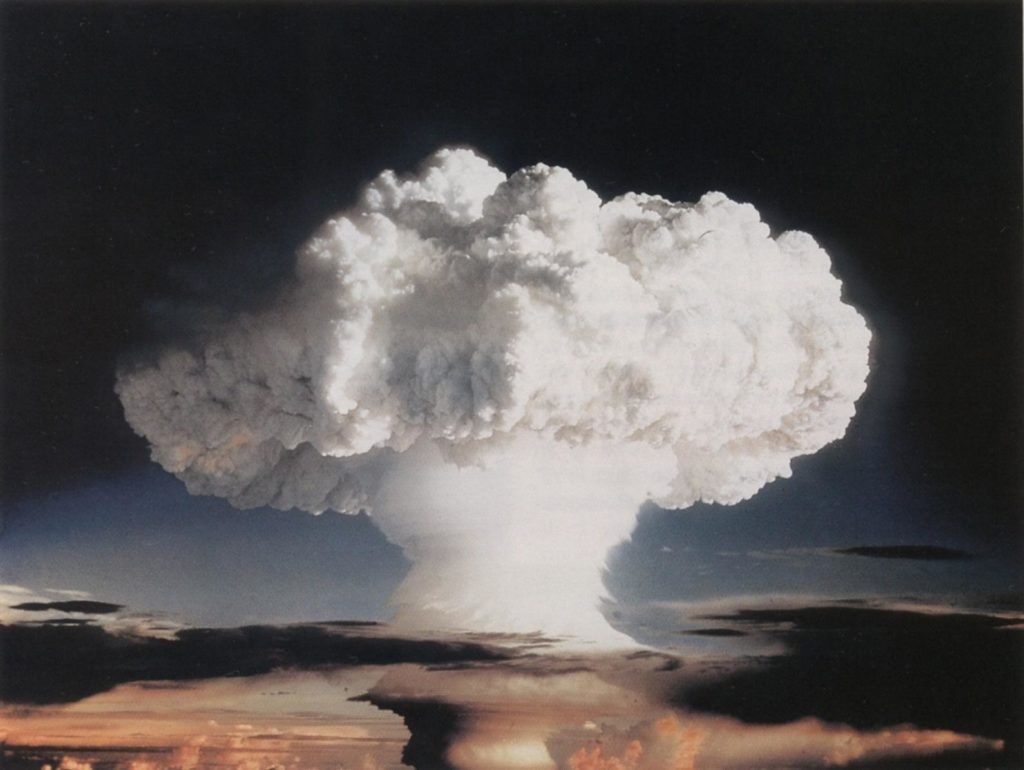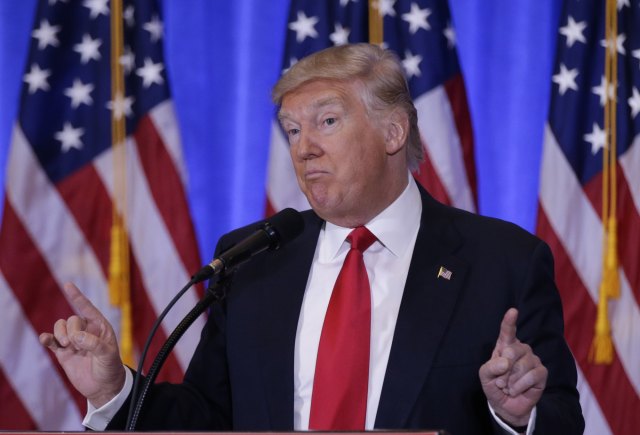Credit: John Angelillo/Consolidated/DPA/PA Images

It may be stretching the meaning of “constructive ambiguity”, a term credited to Henry Kissinger[1. Constructive Ambiguity: the deliberate use of ambiguous language on a sensitive issue in order to advance some political purpose. The term is ascribed to Kissinger in connection with the Middle East and China, but it was not entirely novel. For example, David Lloyd George, sent to Dublin by Asquith in 1916 in the wake of the Easter Rising, broker a solution, tried constructive ambiguity with the militant Irish Nationalists and Ulster Unionists. It resulted in war in 1920 and the partition of Ireland.], but President Trump’s riposte to Pyongyang, that nuclear threats would be met with “fire and fury like the world has never seen”, has certainly confounded Senator Bob Corker. His Foreign Relations Committee holds a hearing today, November 14, to examine the president’s authority to use nuclear weapons. Corker is one of Trump’s fiercest critics within his own party, long doubting his temperament and fitness for office and believing that his rhetoric over Korea could set the US “on the path to World War III”.
Authority to order the use of nuclear weapons has always in effect rested with the president alone. It requires no congressional declaration of war. Corker, however, believes that “the authorities of the legislative and executive branches with respect to warmaking, the use of nuclear weapons and conducting foreign policy overall” need overhauling.
The problem is that process here cannot be separated from strategy – ie, policy. In January the Democrats introduced legislation in Congress to end the president’s power to initiate non-retaliatory use of nuclear weapons. Senator Edward Markey, one of the authors of the proposal, said: “Nuclear war poses the gravest risk to human survival. Yet President Trump has suggested that he would consider launching nuclear attacks against terrorists. By maintaining the option of using nuclear weapons first in a conflict, US policy provides him with that power. In a crisis with another nuclear-armed country, this policy drastically increases the risk of unintended nuclear escalation.”
We’ve been here before
Since the fall of the Berlin Wall and the collapse of the Soviet Union, nuclear strategy has in large part disappeared from the active agenda of military institutions and think-tanks (although it will surely return as China’s nuclear capability develops). It seems an age since 1959 when Bernard Brodie, “the American Clausewitz”, published Strategy in the Missile Age.
Since 1954, US policy had been “Massive Retaliation”, articulated by President Eisenhower’s Secretary of State John Foster Dulles who argued that it was unwise to “permanently commit US land forces to Asia”, to “support permanently other countries”, or to “become permanently committed to military expenditures so vast that they lead to ‘practical bankruptcy’.” Instead, he wanted a new policy of “getting maximum protection at a bearable cost”. While not directly referring to nuclear weapons, in speaking of “massive retaliatory power” it was clear what he meant.

There are two contemporary resonances of particular interest in the Eisenhower-Dulles policy of Massive Retaliation. First is the belief that in the long run nuclear weapons are the cheaper option, much less expensive than the costs associated with a large standing army, navy and air force. Kim Jong-un almost certainly sees it this way[2. https://unherd.com/2017/08/brutality-followed-brutality-followed-brutality-welcome-korean-history/ and https://unherd.com/2017/10/wisdom-age-ages/].
Second is the belief that previous Democratic administrations like Truman and Obama have been timidly reactive – soft – on the threat. Dulles wanted a more proactive and vigorous approach to rolling back the entire communist threat. President Trump appears to want the same for North Korea.
Opponents of Massive Retaliation were many. In Strategy and the Missile Age, Brodie judged its timing “bizarre”, coming as it did only a few months after the first Soviet test of a thermo-nuclear weapon. “Where,” he asked, “would the government summon the courage – or brashness – for this kind of conduct?”
Instead he argued for a concept of escalating responses, in essence that a war in Europe (the Soviet Union at that time being the only Communist nuclear power) would start with conventional forces and escalate to nuclear only if and when necessary. However, Brodie’s views were dynamic. After a meeting with French counterparts who were developing their own nuclear deterrence policy – President de Gaulle’s Force de frappe (from 1961, Force de dissuasion) – he came to the view that the US must use nuclear weapons at the first instance of hostilities of any sort. Anything short of this would seriously erode the concept of deterrence, leading to situations where an enemy – nuclear or non-nuclear – might begin hostilities believing the fighting could remain conventional.
This was not quite to embrace Massive Retaliation, which in his later work War and Politics he characterised as a doctrine of non-intervention, since it invited a retaliatory strike that would inflict more damage on the US than the initial object was worth: “Would an American president trade New York for Hamburg?” The key was a series of lower-yield nuclear stepping stones – battlefield and sub-strategic nuclear weapons that provided seamless linkage between conventional fighting and strategic nuclear response.
In fact, with the expansion of the Soviet Union’s strategic capability after the Cuban missile crisis, the policy of “mutual assured destruction” (MAD) emerged, almost by accident. It was President Reagan’s Strategic Defense Initiative (SDI) – ‘Star Wars’ – in the 1980s, with its promise of the US re-acquiring a true ‘first strike capability’ (a disarming pre-emptive strike), that destabilised MAD and spelled the beginning of the end for the Soviet Union, which could not match the US’s spending on technology.
Wearing the right clothes for the job
Throughout the Cold War, ambiguity was indeed a major factor in keeping the peace – ambiguity in capabilities (the ‘Star Wars’ technology, for example, was unproven), as well as intention. It meant that the Soviet Union could never plan with sufficient certainty to make a gamble worth it.
The essential place of uncertainty in deterrence is nowhere more wittily articulated than in an episode of Yes, Prime Minister (1986) where the Cabinet Secretary, Sir Humphrey Appleby, tries to persuade the Prime Minister, Jim Hacker, of the case for buying Trident[3. https://www.youtube.com/watch?v=ESIJ_C9mUBI]:
Sir Humphrey: With Trident we could obliterate the whole of Eastern Europe.
Jim Hacker: I don’t want to obliterate the whole of Eastern Europe.
Sir Humphrey: It’s a deterrent.
Jim Hacker: It’s a bluff. I probably wouldn’t use it.
Sir Humphrey: Yes, but they don’t know that you probably wouldn’t.
Jim Hacker: They probably do.
Sir Humphrey: Yes, they probably know that you probably wouldn’t. But they can’t certainly know.
Jim Hacker: They probably certainly know that I probably wouldn’t.
Sir Humphrey: Yes, but even though they probably certainly know that you probably wouldn’t, they don’t certainly know that, although you probably wouldn’t, there is no probability that you certainly would.
And herein would lie the problem of nuclear deterrence for a Corbyn government. There would be precious little uncertainty, for the leader of Her Majesty’s Opposition has said that in no circumstances would he use nuclear weapons. So all that would be left is the capability. That itself might be enough to act as some sort of question-mark in a crisis, for a prime minister could be defenestrated and replaced with someone more hawkish, upsetting the calculations of an aggressor’s game plan.
The greater problem, however, would be in the “trivial round and common task” of diplomacy. Jeremy Corbyn reveres Nye Bevan for, among other things, resigning from the Attlee government when it introduced prescription charges to pay for the Korean War. He would do better to remember, however, what Bevan said subsequently, at the 1957 Labour Party conference, about unilateral nuclear disarmament: “It would send a British Foreign Secretary naked into the conference-chamber.”
That is, if he were even allowed in.
It would be the same with Senator Corker’s proposal to take away the US administration’s nuclear option. It would steal the clothes of the president in front of a nuclear-proliferating world.










Join the discussion
Join like minded readers that support our journalism by becoming a paid subscriber
To join the discussion in the comments, become a paid subscriber.
Join like minded readers that support our journalism, read unlimited articles and enjoy other subscriber-only benefits.
Subscribe